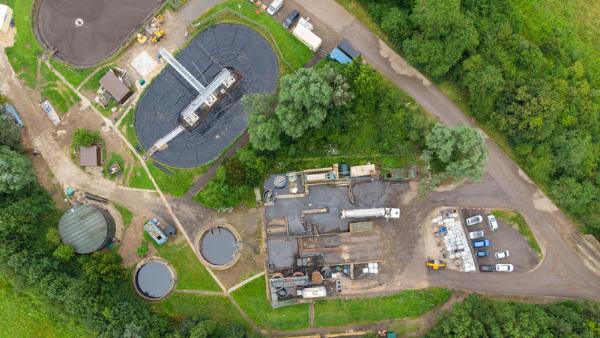On 16 March 2022, Natural England issued new nutrient neutrality guidance to Local Planning Authorities (LPAs). Natural England has advised that in areas where protected sites are in ‘unfavourable condition’ due to nutrient pollution, LPAs can only approve a proposal for development if they are certain that it will have no negative effect on the protected site. The advice was issued to the 32 LPAs, that had previously received advice, as well as to 42 new LPAs, bringing the total LPAs affected to 74.
The guidance includes a new generic nutrient neutrality methodology, catchment specific calculators and an updated catchment map. The new catchment map includes 27 new catchment areas.
Previous guidance
When the previous advice was first issued back in 2019, Natural England focused on areas in the south and west of England. The new guidance now also catches several areas in the Midlands and the North. Developers in these catchments will need to demonstrate nutrient neutrality before planning permission can be granted. Not only will a developer have to satisfy the LPA that mitigation is sufficient and nutrient neutrality is secured (either on-site or off), but Natural England will also need to sign-off. As part of the appropriate assessment stage of the Habitats Regulations Assessment (HRA), there is a statutory 21-day consultation with Natural England.
We explain the original guidance and the methodology stages in more detail in our article ‘Nutrient Neutrality – the basics‘.
New variables
The four-stage process for determining a nutrient budget remains largely the same. However, the new generic methodology introduces the following new variables at stages two and three of the methodology in relation to leaching rates:
- operational catchment;
- soil drainage type;
- average annual rainfall; and
- whether the site is within a Nitrate Vulnerable Zone (NVZ).
These new variables impact hugely on the leachate kg/ha of nitrate and phosphate for each of the individual land use types. Therefore, the land use nutrient export coefficient for both existing and future land use differs from the previous methodology calculations.
The Government’s Planning Advisory Service has confirmed that these updated tools will change some of the figures used in nutrient budgets and developers will need to rerun their calculations using the new relevant calculators.
Worked example
For example, under the previous guidance for the Stodmarsh SAC and Ramsar:
|
|
Land use |
Area (ha) |
Nitrogen leaching rate (kg/ha/yr) |
Phosphorus leaching rate (kg/ha/yr) |
| Existing land | Poultry farming | 50 | 3015 | 17 |
| Future land | Woodland | 50 | 250 | 1 |
Fig.1
Under the new guidance:
|
Catchment |
Land use |
Area (ha) |
NVZ |
Average annual rainfall (mm) |
Soil drainage type |
Nitrogen leaching rate (kg/ha/yr) |
Phosphorus leaching rate (kg/ha/yr) |
|
| Existing land | Lower Stour | Poultry farming | 50 | Yes | 1,110.1 – 1,200 | Slightly impeded drainage | 2380.50 | 23.71 |
| Future land | Lower Stour | Woodland | 50 | Yes | 1,110.1 – 1,200 | Slightly impeded drainage | 150 | 1 |
Fig 2.
With significantly less average annual rainfall and impeded drainage:
|
Catchment |
Land use |
Area (ha) |
NVZ |
Average annual rainfall (mm) |
Soil drainage type |
Nitrogen leaching rate (kg/ha/yr) |
Phosphorus leaching rate (kg/ha/yr) |
|
| Existing land | Lower Stour | Poultry farming | 50 | Yes | 800.1 – 850 | Impeded drainage | 1880.33 | 40.19 |
| Future land | Lower Stour | Woodland | 50 | Yes | 800.1 – 850 | Impeded drainage | 150 | 1 |
Fig. 3
This not only affects developers and LPAs but also those providing off-site mitigation. Using the example in figure 3, under the new guidance the mitigation site will have:
- 1,730.33 kg/yr of nitrogen credits available; and
- 39.19 kg/yr of phosphate credits available
In comparison to:
- 2,765 kg/yr of nitrogen credits; and
- 16 kg/yr of phosphate credits
under the old guidance.
Impacts
LPAs are taking stock to understand the implications of the new guidance. Since different LPAs are affected to varying degrees, there have been a variety of responses to the new guidance.
Havant Borough Council has issued a statement saying that they have “temporarily paused the approval of any residential developments in the face of updated terms and conditions for dealing with nutrient neutrality as defined by Natural England.”
Norwich City Council has stated “ until these matters are resolved, the city council will not be able to grant planning permission for developments comprising overnight accommodation in Norwich”.
Although the new methodology is more sophisticated than the previous iteration, the wider scale roll-out is likely to result in severe delays to development across England. We have already seen considerable delays in catchments already affected by the previous advice.
LPAs that had already made good progress towards developing strategic mitigation solutions based on the previous guidance, such as the Solent Nutrient Market Pilot, will now have to recalculate.
Natural England has pledged to give £100,000 to each affected catchment to support LPAs. This is in addition to a collective series of pledges from Severn Trent Water, United Utilities, South West Water and Yorkshire Water totalling £24.5m.
For further information and questions about nutrient neutrality, please contact Ben Sharples

